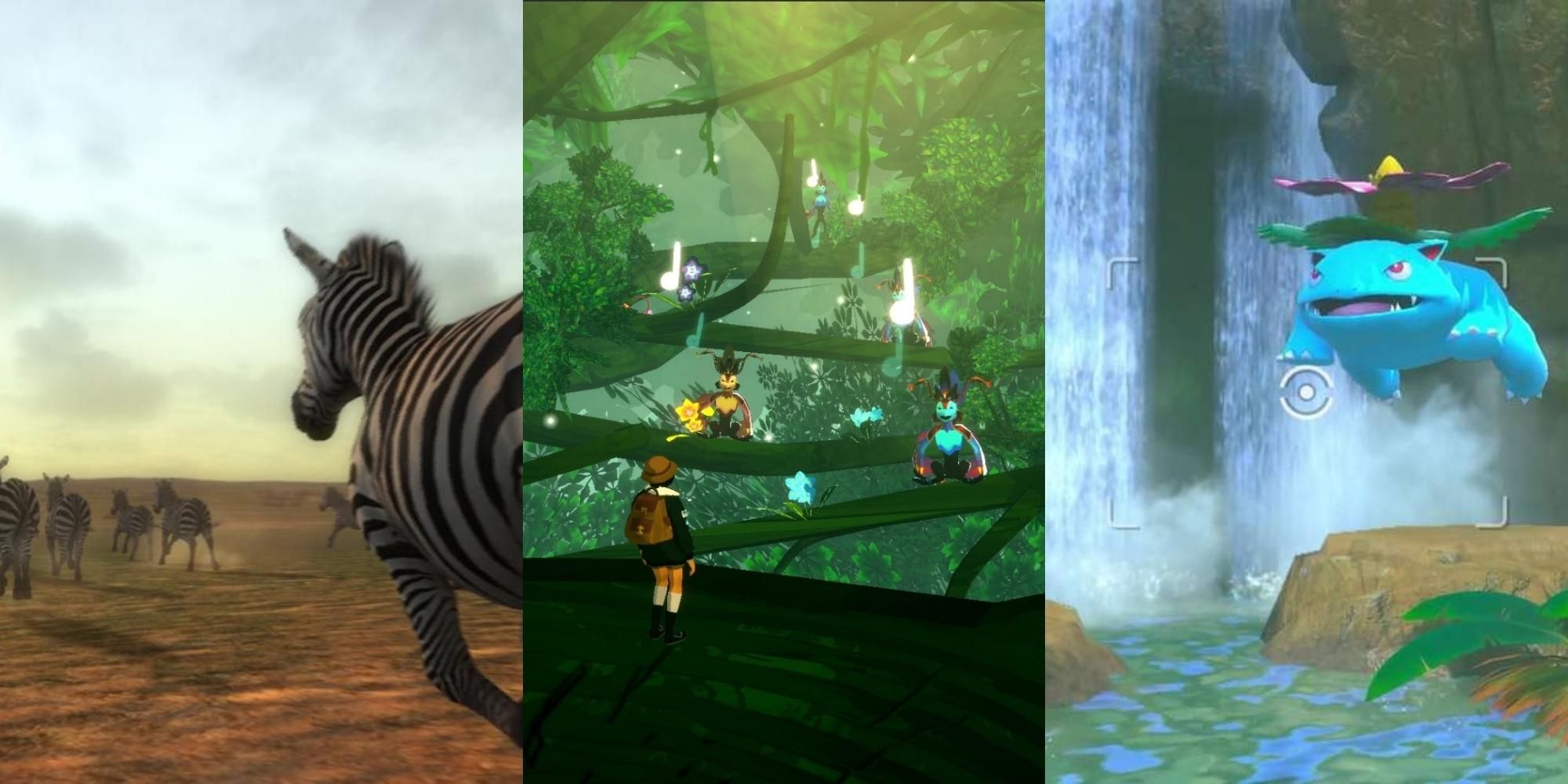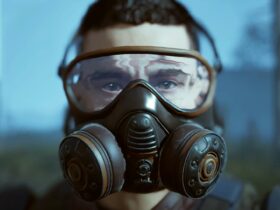Summary
- Free camera movement is crucial in virtual photography; it allows experimenting with angles and subjects.
- Zoom lens enhances shots by adjusting focal length; important for close-ups and broad images.
- Pausing the game in photo mode is essential for composing action shots; proper lighting settings are crucial for image quality.
The history of photography goes back to the 19th century, but more recently, a new form has started to emerge known as virtual photography. This is the art of taking amazing photographs within virtual worlds, typically video games. Virtual photography is distinctly different from simply taking screenshots. Screenshots are more of a utility, designed to easily visualize some aspects of gameplay. Virtual photography is an art form worthy of professional photographers that requires many of the same skills. It is also different from games that use photography as a mechanic, like Life is Strange, Fatal Frame, or Beyond Good and Evil, as it is structured around creativity by the player rather than acting as an in-game objective. Virtual photography is usually centered around using a photo mode that allows the player to set up and edit shots.

Related
Tales of the Shire and a Photo Mode Would Be a Match Made in Heaven
Given the beauty and nature of its setting, Tales of the Shire could benefit from a photo mode that would let players capture their favorite moments.
Obviously, not all games can have a photo mode. It doesn’t work so well in multiplayer games, and it’s pretty redundant in anything with an isometric perspective. Even then, there are still some major franchises that resist it. However, photo modes have become increasingly common at every level, from AAA franchises to indie studios. Many developers see them as a great way to encourage community engagement, but every photo mode is unique, and sometimes they don’t work as effectively as they could. There are a few key things a good photo mode needs in order to work effectively. This guide is a breakdown of what video games need to cover if they want to put a good photo mode into action.
6
Free Camera Movement
Unrestricted Movement Is The Foundation Of Virtual Photography
One of the simplest ingredients to a good photo mode is the ability to move the camera freely. This is essential. Without being able to properly move the camera, there isn’t a lot of room to experiment with shot composition. Failing to provide adequate camera movement is a pitfall that has impeded quite a few photo modes. Those of Batman: Arkham Knight, The Callisto Protocol, Cyberpunk 2077, and pretty much every Naughty Dog title are set up so that the camera is stuck orbiting the player character. This makes it frustrating to work with, since a good photographer might want to look at other things besides the protagonist. There is also the approach taken by the Yakuza series and Disney Dreamlight Valley, where the photo mode is restricted to the protagonist’s iPhone, preventing the photographer from experimenting with different angles and limiting them to quieter moments when not much is happening. This makes it feel more like a glorified selfie mode than a tool for good photography.
It is, therefore, important to minimize restrictions on camera movement while photo mode is activated. The best examples may limit how far the camera can move, but try to allow it as much range as possible. Freeing up the camera also makes it easier to experiment with different angles or focus on different subjects. An orbital camera that only allows focus on the player character is incredibly frustrating if the player is trying to get a shot of one of their allies or enemies. Freeing up the camera allows it to be moved, rotated, lifted, and lowered, all as the player sees fit.
A good photo mode should be available as much as possible. Unfortunately, some games will restrict it to specific sections. To be fair, this is sometimes for practical reasons. It is understandable why photo mode is usually disabled during cutscenes, for example, or in sequences where camera movement would be more difficult. However, sometimes it gets disabled during specific gameplay portions for no real reason. Assassin’s Creed Origins disabled photo mode during the naval battle sequences, and it wouldn’t be available in the modern-day portions with Layla Hassan until Valhalla. This is even more so the case when photo mode takes the form of an in-game camera (see below), limiting shots to quieter moments when the player can actually pull out photography equipment in-game. The important takeaway is that there should be as few restrictions to when photo mode can be activated as possible.
5
Zoom Lens
Brings The Image Into Focus
Every good photographer knows the importance of zooming. The ability to adjust the focal length is crucial to a good shot, and keep in mind that this is different from simply moving the camera closer to the subject. Being able to zoom affects what is visible in the shot. Zooming in can bring objects into focus and enhance details, while zooming out is excellent for getting a much broader image or blending details together. This is why it’s common to zoom in for a close-up on a person or animal but to zoom out when photographing a landscape. It is possible to subvert these conventions, of course, but that should be a choice on the photographer’s part. Without a proper zoom lens, photos can come off looking amateurish.

Related
8 Beautiful Photography Video Games
These photography video games with imaginative gameplay are among the genre’s best titles for gamers to check out.
Take, for instance, the photo mode in Kingdom Come: Deliverence 2. While it has free camera controls, the inability to zoom properly makes photos look off-putting when trying to get close-ups. The zoom function would allow players to adapt their shot to the current subject. Meanwhile, in an example like Space Marine 2, the zoom function can be used to bring everything from space marines to tyranids to vehicles into focus, making for a really clear and powerful shot.
4
Pausing The Game
Virtual Photography Offers Something Real-Life Photography Does Not
While every photo mode is unique, there are some common patterns between all of them. Most photo modes will pause the game upon activation, allowing the player to take their time composing their shot. Some include options to unpause while in photo mode, but pausing is usually the default. However, there are a few examples of games that do not do this. Journey to the Savage Planet and Construction Simulator, for instance, do not pause despite having other useful features in their photo modes. It could be argued that not pausing the game is more realistic; after all, real-life photographers can’t exactly pause the world around them while they try to line up the perfect shot.
However, this ability to pause at just the right moment can be crucial for taking perfect photos. It is this ability that makes it possible to take amazing action shots. Things like a vehicle speeding, a gun firing, an explosion, even just simple walking or running. Sometimes, pausing at the right moment can even make a really cool, surreal shot. For this reason, a photo mode that doesn’t pause the game can cause tons of frustration as it mostly limits the player to photographing static objects. Player action is basically ground to a halt. In Construction Simulator, for example, the lack of pausing makes it impossible to get good shots of vehicles in action, since any machine operated by the player shuts down the moment photo mode is activated. In Journey to the Savage Planet, it’s difficult to take photos of aliens who keep moving out of frame before the photographer can choose the right settings or line up a shot.
3
Lighting And Visibility Settings
Any good photographer will know the importance of lighting. One of the most important details a professional photographer has to be aware of is their camera’s exposure settings, which determine how much light enters the camera. This can have a huge impact on the shot. Too much or too little light can easily ruin a photo, and outside the camera, well-placed light (whether intentional or not) and shadow help to produce a great image. The same is true of virtual photography, which is where a few important editing options come in. A lot of the best photo modes will have settings for exposure and brightness, and as in real life, a good virtual photographer will always need to tinker with these settings to get things perfect. Additionally, it is good to have settings for contrast, which helps bring out shadows.

Related
Dead Space Remake Really Needs a Photo Mode
The Dead Space remake has various new features and upgrades, but one feature that has become a staple in modern games is missing: a photo mode.
Some photo modes even include options to adjust in-game lighting. Ratchet and Clank: Rift Apart, Gotham Knights, Beyond Blue, and both Star Wars: Jedi games have options for adding spotlights. The Horizon and Far Cry games have a time-of-day slider that shifts daylight around. No Man’s Sky literally allows photographers to move the sun to produce better lighting conditions. Though not essential, being able to manipulate light can do a lot to produce a better image.
While it is possible to work with purely in-game lighting, lacking any means of adjusting brightness, exposure, and contrast can make it harder to get the right shot. Control‘s photo mode, for example, lacks any lighting controls, which can make it hard to get good contrast when many of its locations have very neutral lighting. The same is true for games that feature a lot of dark spaces or locations with very bright lighting that requires a reduced exposure.
2
Separate The Camera From The Game
Using An In-Game Camera Only Adds Restrictions
One thing that can be really frustrating is when a photo mode is integrated into gameplay, usually by having it framed around the protagonist’s phone or personal camera. Yakuza‘s been doing this for years, having an option for the main character to whip out his phone and take a shot. Disney Dreamlight Valley has a similarly frustrating mechanic for its photo mode, which often gets complicated by people automatically posing for the camera. The Legend of Zelda even has its own version with the Sheikah Slate. On paper, it might sound more realistic, but in practice, it’s actually quite restrictive. While there can be merit to having quests centered around taking pictures this way, it carries with it the problem of limiting shots to the perspective of the main character. It also limits exactly when shots can be taken, since it’s only available during periods where the hero can pull out their phone and take a shot.
In order to be used to its maximum potential, a good photo mode should be separate from anything actually in the game. A lot of the best examples either have photo mode accessed through the pause menu or have a hotkey to activate it. This offers a lot more room to use the photo mode in different contexts. Imagine, for instance, if Yakuza dropped the iPhone mechanic and replaced it with a proper photo mode. Players could start taking shots of the game’s fight sequences or sweeping views of the open world. There would be some excellent opportunities to experiment with interesting shots.
1
Non-Essentials
In addition to the above, some features aren’t necessarily required, but when included, they can make a good photo mode even better.
- Depth of Field: An option to blur parts of the photo to bring the intended subject into focus. This effect draws the eye where it is meant to go and reduces distractions.
- Character Pose/Expression: Many photo modes include options to have certain characters (usually the protagonist or immediate allies) take on specific poses or change facial expressions. This can be a fun thing to experiment with and produces interesting effects when used effectively.
- Ability to Remove Characters: Some photo modes include options to remove specific characters from view. This can include the protagonist, allies, enemies, civilians, animals, or whatever else the game features. Using this feature can help declutter a shot or remove obstructions to the camera’s view.
- Headgear Toggle: If the game features options for the protagonist to wear headgear or masks, some photo modes will include a toggle for them to be added or removed. Being able to remove a piece of headgear can add to a photo by showing the character’s face (and therefore expression), but sometimes the shot might look better if the mask or helmet is kept on.
- Filters: Applying a filter can affect how different colors appear in the image, which can create interesting effects. Some filters also add fun effects to experiment with, like making the shot look pixelated or putting it in sepia tones.
- Saturation: Adjusts the amount of color in an image. This can make the shot a lot more vibrant or greatly muted, depending on the intended effect. Taken to its extreme, this turns the shot into full-on black and white.
- Bloom: Emphasizes or reduces the impact of bright areas in the photograph

More
Dead Rising Deluxe Remaster: All Camera Part Locations
You can upgrade Frank’s camera at certain stores around the mall in Dead Rising Deluxe Remaster.












Leave a Reply